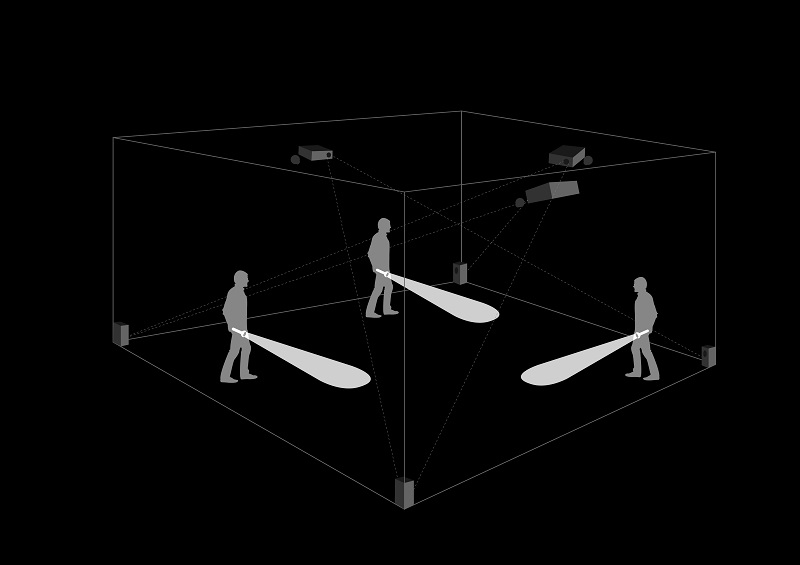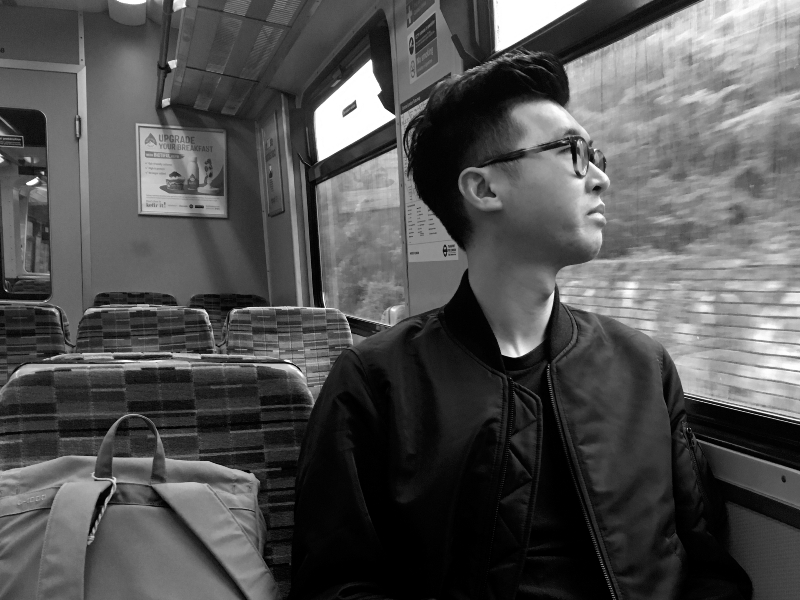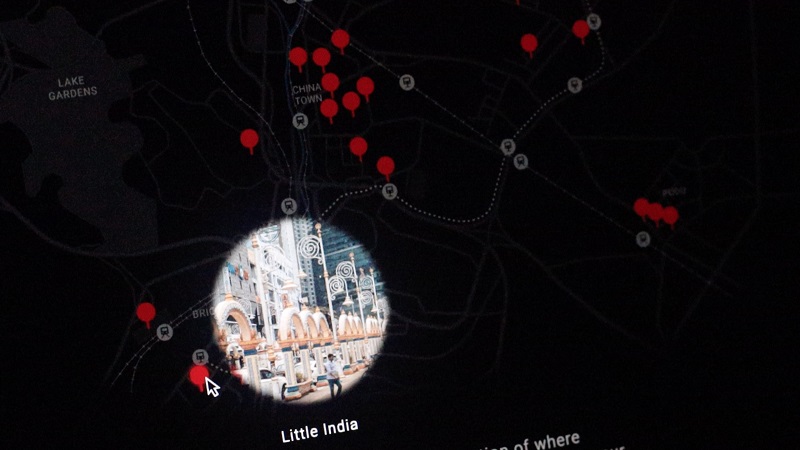
The physical exhibition was brought online due to lockdown restrictions (All photos: Weng Nam Yap)
If you close your eyes and try to visualise downtown Kuala Lumpur, what do you see? What can you hear?
The parable of The Blind Men & the Elephant tells the story of a group of visually impaired fellows who attempt to learn what said elephant looks like. Each of them perceives only a small part of the pachyderm and, as a result, a disagreement arises. In the same way, one’s visualisation of KL may differ greatly from that of the next person. That does not mean anyone is being inauthentic but, rather, collective information is what brings the bigger picture together.
These questions and the story are at the heart of media artist and graphic designer Weng Nam Yap’s installation, which is named after the ancient Indian fable. The concept of the work involves entering a dark and empty space, where the participants play the role of the blind men. They are given a torchlight to navigate the dark and, when they shine the torch on light-sensitive spots in the projection, it will trigger a composition of sounds, alongside masked images of a scene. The participants are then invited to piece the information together and guess the specific location.
tbmate_sapporo_7.jpg

The audio-visual installation was first exhibited in 2016 in Hokkaido, Japan. KL-based Yap was invited to host his debut solo exhibition in Sapporo and he produced The Blind Men & the Elephant, in Sapporo specifically for it. When he was approached with the offer, he had little time to figure out what to exhibit. “I had to find content that was related to Sapporo. I also had to think of how to move the piece of work to Japan. That was the starting point,” says Yap, 35.
“I asked myself whether it was possible to create an exhibition that has nothing to exhibit. At the same time, I wanted to create a work that enabled me to travel. So, it wasn’t just something that would end up in Sapporo, but would be possible to recycle in other places with different content.”
“The elephant in the room” was one of the key phrases he pinned for inspiration, which eventually led to The Blind Men & the Elephant. The former denotes an obvious situation or problem that people do not want to talk about while the latter involves figuring out something that people have no knowledge of. Both “elephants” can mean the same thing, in Yap’s case, with the former describing those who have experienced the installation and know the answer, and the latter, those who have not.
He spent time interviewing locals in Sapporo, asking them about interesting places and sounds unique to the city and forming the exhibition around his findings. When he returned to KL, he was offered a sponsorship in 2018. He knew he wanted to refine the Sapporo version and apply it here but had difficulty finding the right people to work with.
As the installation largely involved projections, Yap needed to get the tech right. After a year of trial and error with different outfits, in addition to a workshop in Japan, he finally found collaborative chemistry with a creative group, and all that was left to do was insert the content.
weng_nam_yap.jpg

Since this would be about his hometown, Yap went on guided tours and studied books on its urban history (he recommends articles by UCSI architecture lecturer Teoh Chee Keong that appeared in Disappearing Kuala Lumpur). He did not employ the same interviewing approach he used in Sapporo, though.
“Since I’m from here, it’s a little different,” he says. There is already a formed viewpoint of his city, so being objective could be a tad difficult. And with Malaysia’s highly diverse demographics, the sample answers would differ greatly. In the end, he decided that the best way was to draw from his personal experience and focus on a place he had memories of.
After almost two years, the installation was finally ready in March 2020. It flooded social media and promotional flyers were plastered on the walls of cafés. But of course, Covid hit the country that month. “I tried to wait it out. Towards September, the Movement Control Order was more relaxed, but I missed the time to exhibit,” he says.
Last December, Yap decided to bring the installation online. “I told myself I could not stop there; I had to finish it.” But that meant another round of looking for tech people to set it up on the web. It was essential that the sounds and visuals for the virtual platform were optimised. “You want to find people who have the techniques and share the same vision as you. That’s the hardest.” He eventually found it in digital agency 8finite Creative.
tbmatekl_5_1.jpg

Yap’s online version of The Blind Men & the Elephant, in Kuala Lumpur is unique, thanks to the aspect of interaction. “While nothing can beat the physical experience, I’m trying to mimic it as closely as possible.”
To experience the installation, visit tbmatekl.com on your computer and you will be instructed to download an app to your mobile device. Use the app to scan the QR code on the website and your phone will connect as a torchlight. If you happen to have a projector at home, plug it in and turn off the lights for a better experience. Similar to the physical exhibition, move the light around with your torch until you trigger a sound and visual. You can do this several times and proceed to take a guess on the map on the next page. The final landing page is where Yap reveals the site, explaining its identity and what it means to him.
Without spoiling the fun, the only hint is that this place has changed drastically over the past decade. But then again, which neighbourhood in KL has not?
Yap recorded the audio files a little before the pandemic, so you will hear sounds of crowds, bustling streets and traffic — familiar sounds that may evoke memories that feel distant, given the lockdown.
tbmatekl_6_2.jpg

Nowadays, the cacophony of the city we know all too well has dwindled to silent streets and lonesome alleys, with many doors shuttering. Even without Covid, historic sites, buildings and businesses that have been operating for years were already on the brink of disappearing, with a long line of contemporary projects waiting to take over. With the pandemic, however, many were forced to fold before the fight. “It’s sad,” Yap says grimly. “With Covid, they’re gone even faster. What will be left after?”
At the launch of the installation, Yap said: “KL is a city that is constantly disappearing, renewing and evolving. Every person who experiences the city carries a unique but limited memory and truth of it.” His own individual perception cannot define our metropolis, but it contributes to a larger narrative that suggests the importance of conservation of our people and heritage.
It is true that change is the only constant, but that should not mean we forget our past.
“The objective of this exhibition is a little different from the one in Sapporo,” he says. “This one has a deeper meaning to me. I hope people will have the interest to know more about the city and to care for it. I hope it will open up more conversations.”
Experience the installation here.
This article first appeared on Aug 2, 2021 in The Edge Malaysia.


